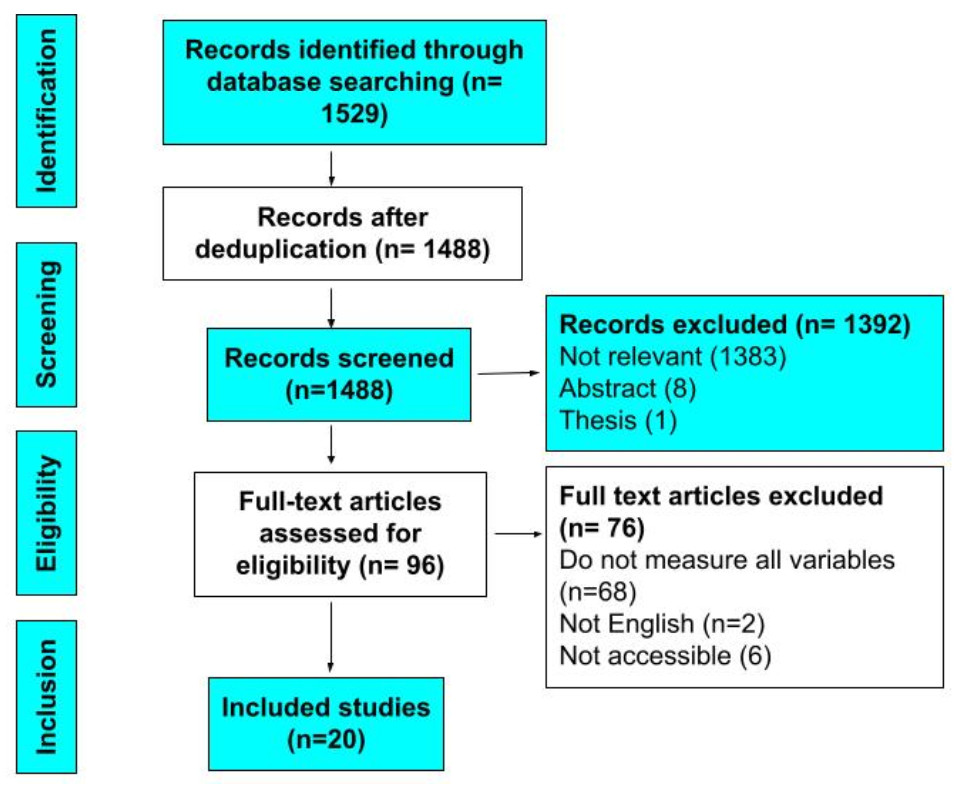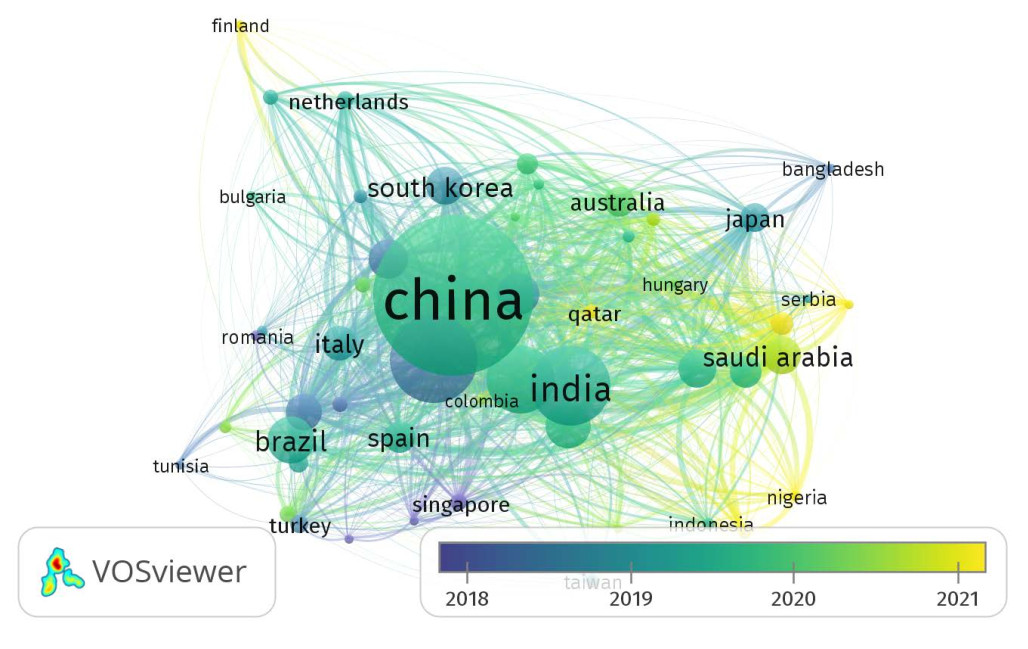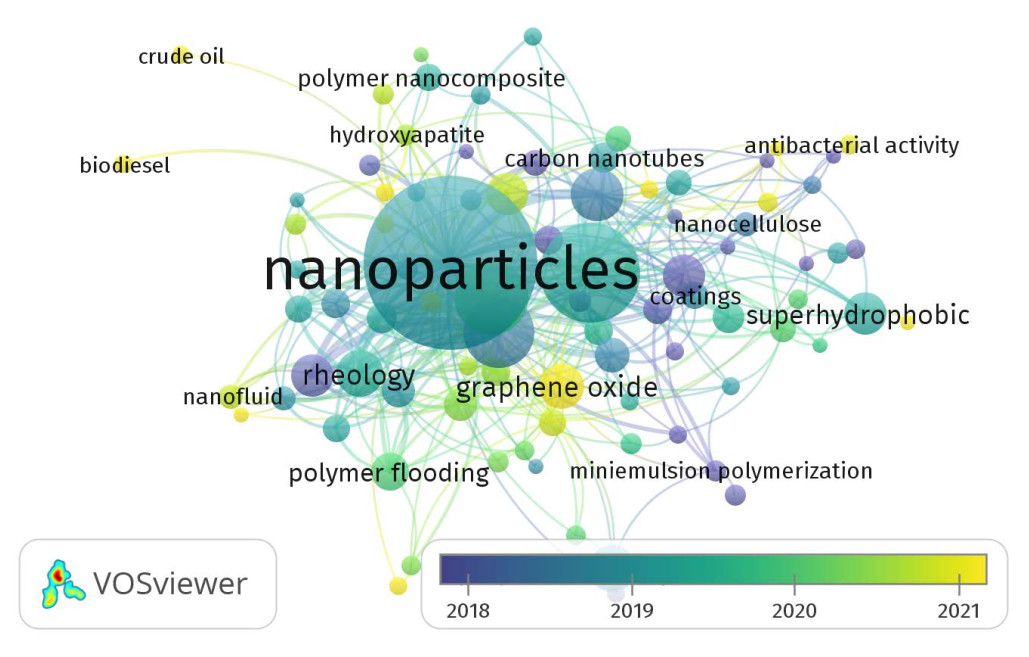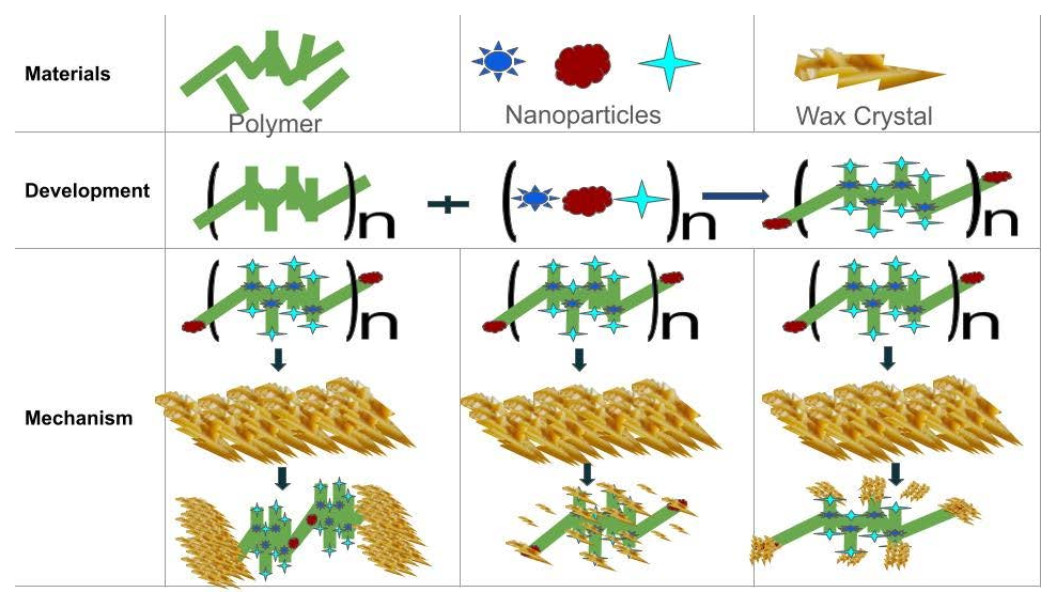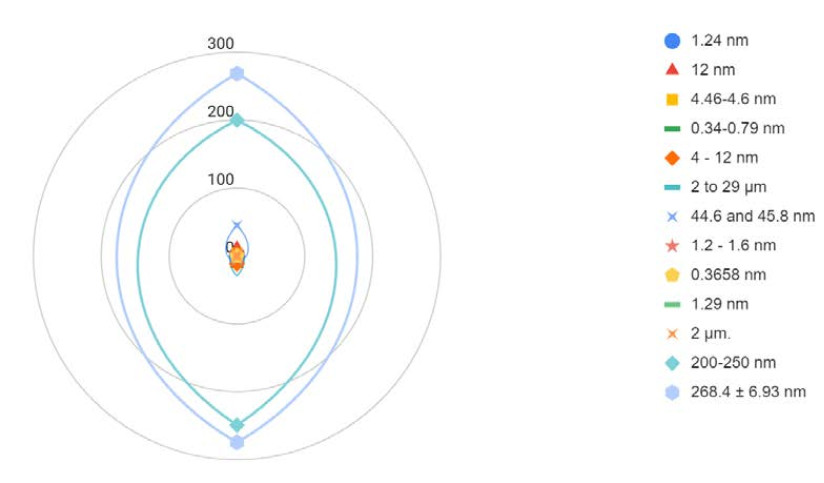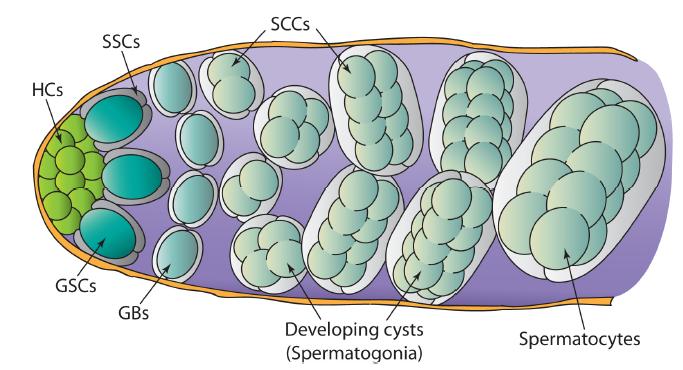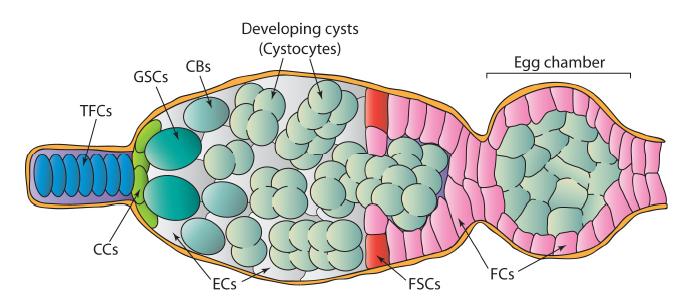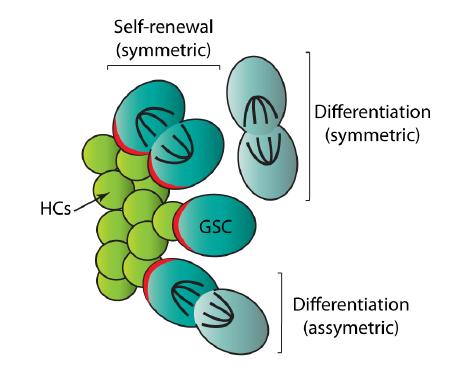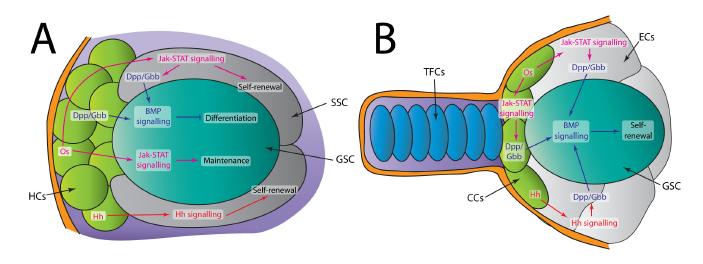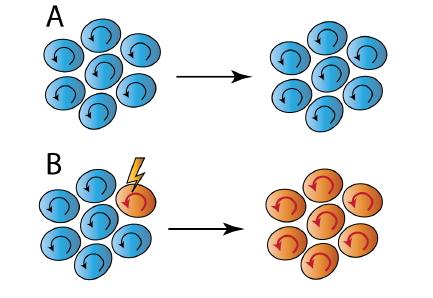Abbreviations:
APEs: Alkylphenol ethoxylates; CMC: Carboxymethyl cellulose; CPO: Crude palm oil; CVD: Chemical vapor deposition; DMAc: N, N-dimethylacetamide; EVA: Ethylene vinyl acetate; GO: Graphene oxide; JSO: Jatropha Seed Oil; LiCl: Lithium Chloride; MMT: montmorillonite; NC: Nanocomposite; NP: Nanoparticle; ODA: octadecylacrylate; ODMA: Octadecyl methacrylate; OL-GO: Oxidized lignin-graphene oxide; PEG: Polyethylene glycol; PEHA: Poly(2-ethylhexyl acrylate); PIE: paraffin inhibition efficiency; PMMA: Polymethyl methacrylate; PNC: Polymer nanocomposite; PODMA: Poly(octadecyl acrylate-co-docosyl acrylate-co-maleic anhydride; PPD: Pour point depressants; SWCNTs: single-wall carbon nanotubes; TEA: Triethanolamine; VGO: Vinyl Graphene Oxide; VND: Vinyl neodecanoate; WAT: Wax appearance temperature
1.
Introduction
The extraction and utilization of crude oil are fundamental to global energy production, driving economies and fueling countless industries [1,2,3]. However, inherent within the bounty of crude oil lies formidable challenges, chief among them being the presence of waxy components [4]. These components, predominantly paraffin-based long-chain hydrocarbons, pose a persistent threat throughout the entire petroleum supply chain, from extraction to transportation and refining processes.
Wax deposition is a prevalent issue in the petroleum industry and poses substantial operational challenges and economic consequences [5,6]. It occurs when wax, a component of crude oil, solidifies and accumulates on the inner surfaces of pipelines, storage tanks, and other oilfield equipment [7]. This build-up can result in reduced flow rates, increased pressure drops, and even complete blockages. By addressing the challenges posed by wax deposition, the petroleum industry can improve operational efficiency, minimize production losses, and increase overall economic viability [8].
Common treatment methods for wax deposition include thermal methods [9,10], chemical additives [11], mechanical pigging [12], and advanced materials and technologies [13]. Each of these methods has advantages and disadvantages. If wax deposition is not handled properly, it can pose risks to the environment and operational safety, similar to the issues posed by improperly managed expired medicines [14].
One of the most widely used methods is chemical wax treatment, although the choice of chemicals for this purpose poses significant environmental challenges due to the use of synthetic chemicals, many of which are toxic and hazardous [15]. Conventional wax treatment methods also involve the use of modifiers that are nonrenewable, deplete natural resources [16], are costly, and require careful handling during use and disposal due to their toxicity [17]. The hazardous nature of these chemicals threatens the safety of workers and can contaminate soil, water, and air. For example, alkylphenol ethoxylates (APEs) are effective at dispersing wax crystals but are persistent in the environment and can disrupt the endocrine system in wildlife [18]. Aromatic hydrocarbons such as toluene and xylene and volatile organic compounds (VOCs) effectively used in dissolving wax are toxic and can lead to air and water pollution, posing health risks and contributing to smog formation [19,20]. Phosphonate-based inhibitors are persistent in the environment and can cause eutrophication of water bodies, harming aquatic life. Given these concerns, eco-friendly alternatives are urgently needed [21].
One promising approach involves the use of green synthesized polymer nanocomposites [22,23]. These advanced materials are designed to be environmentally friendly and biodegradable, addressing the ecological drawbacks of traditional chemical additives [24]. Green synthesized polymer nanocomposites leverage natural and renewable resources to ensure compliance with regulations and reduce reliance on fossil-based chemicals [25,26]. Moreover, their nanoscale structure allows for more effective interactions with wax molecules, enhancing their ability to prevent wax crystallization and aggregation [27,28,29].
Polymer nanocomposites have two components: Polymers and nanofillers [30]. They represent a revolutionary class of composite materials composed of a polymer matrix reinforced with the addition of inorganic nanoparticles [31]. Compared with traditional composites, these nanocomposites have garnered significant attention because of their unique properties and enhanced performance [25]. The incorporation of nanoparticles into the polymer matrix at the nanoscale results in remarkable improvements in various material properties (Figure 1). NPs offer exceptional characteristics, such as a high surface area-to-volume ratio, tailored surface chemistry, and unique electronic or magnetic properties, which can be leveraged to achieve the desired outcomes [32,33,34]. Their use aligns with sustainability objectives and minimizes contamination during application and disposal. The potential of polymer nanocomposites to reduce adverse environmental impacts highlights the importance of sustainable practices in the petroleum industry to effectively manage wax-related challenges [34].
Several works have been conducted for polymer nanocomposites, for example, [35] address the challenge of wax deposition during crude oil production, emphasizing the preference for organic wax inhibitors over synthetic chemicals owing to cost and environmental concerns. These findings suggest that JSO and CPKO act as effective viscosity-reducing agents, with JSO exhibiting the highest PIE of 86.30% when blended with Penara crude oil, offering potential benefits for sustainable energy production. The researchers in Mohammadi S et al. study[36] explored the effectiveness of single-walled carbon nanotubes (SWCNTs) in controlling asphaltene and wax deposition in live oil under realistic production conditions. Research suggests that SWCNTs effectively regulate the development of asphaltene aggregates, leading to a reduction in asphaltene size. This mechanism delays the formation of wax and alters the crystal structure of wax. Despite these potential works conducted on polymer nanocomposites, to our knowledge, only a very few studies are available in this field, and there is an insufficient review of existing studies to evaluate and assess the efficacy, limitations, and future potential of additives in addressing waxy crude oil challenges. Therefore, to better assess the current trends, this systematic literature review aims to evaluate the current understanding and advancements in the application of polymer nanocomposites (PNCs) as promising solutions to address the challenges encountered in the handling and transportation of waxy crude oil.
By synthesizing and critically evaluating research findings, the following objectives can be explored:
● Spatiotemporal distribution of the research on polymer nanocomposites and wax deposition
● Synthesis routes of diverse millennium polymer nanocomposites
● Mechanism of wax improvement
● A common emerging trend for wax improvement applications
● Diverse millennium polymer candidates for use as wax modifiers in nanomaterials
● Trending nanoparticle candidates for polymerization
● Future perspective
This review can provide valuable insights for researchers, engineers, and industry stakeholders seeking to optimize the use of polymer nanocomposites in the petroleum sector [37]. By conducting this comprehensive review, we aim to bridge the existing knowledge gaps and offer a consolidated resource that highlights innovative solutions and sustainable practices. This will not only facilitate the development of more effective strategies for wax management but also promote the adoption of environmentally friendly technologies in the petroleum industry.
2.
Methodology
The systematic review conducted in this study was performed following some of the guidelines suggested by the Preferred Reporting Items for Systematic Reviews and Meta-Analyses (PRISMA) statement: The protocol employed by Ali I et al. [38,39].
2.1. Data and literature sources
The search strategy encompasses a combination of electronic databases, including Science Direct, Scopus, and Google Scholar, which are widely recognized for their extensive coverage of scholarly literature. The search encompassed academic journals, conference proceedings, and gray literature sources, such as technical reports, dissertations, and preprints, to cover a comprehensive review of the available literature. To ensure a systematic and rigorous search, a combination of keywords, Boolean operators, and database-specific search syntax were employed. The search strings included terms such as "Pour Point Depression", "Rheological properties", "Industrial application", "Future Perspectives, " "Emerging Trends, " "Polymer Nanocomposites, " and "Waxy Crude Oil." These search strings were utilized interchangeably to address the limitations of the database search boxes and capture relevant studies.
The retrieved articles were assessed via Rayyan, a collaborative research platform specifically designed for systematic and literature reviews. Rayyan facilitated the inclusion and exclusion of search results, allowing systematic and literature reviews, with deduplication supported by Zotero (version 6.0.30), a reference management software, to organize and manage the retrieved articles. This strategy aimed to capture studies published from 2014-2024 that focused on the intersection of polymer nanocomposites, synthesis, application, and waxy crude oil.
For the bibliometric analysis, VOsviewer and the Scopus database were utilized. VOsviewer is a valuable tool for bibliometric analysis, enabling researchers to explore and visualize relationships within scientific literature. Integrated with the Scopus database, VOsviewer provides access to a wealth of information spanning multiple disciplines and regions. This integration empowers researchers to conduct in-depth analyses, uncover insights and connections, and gain a deeper understanding of the research landscape.
2.2. Study selection
The initial step in the evaluation of the selected articles was based solely on the eligibility of their titles and abstracts [38]. This process resulted in the classification of articles as either "included" or "excluded." Four primary criteria were established to identify suitable studies for a systematic review:
Ⅰ. Publication Date: The study must have been published between 2014 and 2024. This time frame was chosen to ensure the inclusion of up-to-date research findings in the field.
Ⅱ. Research Focus: We should focus largely on the role of polymers, nanoparticles, or polymer nanocomposites in controlling wax deposition in crude oil systems. This criterion was essential to meet the review of a specific topic of interest.
Ⅲ. Data Reporting: The study must report data on the synthesis, characterization, and evaluation of polymer nanocomposites and their application. This criterion was crucial for assessing the effectiveness of the proposed solutions.
Ⅳ. Language: Manuscripts written only in English were eligible for inclusion. This criterion was necessary to ensure that the review included studies accessible to a broad international audience.
In addition to these inclusion criteria, several exclusion criteria were also employed to refine the selection process:
Ⅰ. Irrelevant Focus: Studies not encompassing the role of polymer nanocomposites in controlling wax deposition in crude oil systems were excluded. This criterion ensured that the review remained focused on its intended topic.
Ⅱ. Publication Date: Publications published before 2014 or after 2024 were not included. This criterion helped maintain the currency of the review and ensured that the latest research findings were considered.
Ⅲ. Language: Papers available in Japanese, Chinese, or languages other than English were excluded. This criterion was necessary to ensure that the review included studies accessible to the majority of readers.
Ⅳ. Abstract and Full-Text Availability: Studies with irrelevant abstracts or unavailable full texts from any source were discarded. This criterion ensured that only complete and relevant studies were included in the review.
By applying these inclusion and exclusion criteria, researchers have aimed to identify high-quality studies that directly address this research question and contribute to a comprehensive understanding of the role of polymer nanocomposites in controlling wax deposition in crude oil systems.
2.3. Overview of the data collection
During the literature search, 1,529 articles were identified. After removing duplicates, 1,488 unique articles remained. Of these, 1,392 were excluded at the cost of the initial screening for eligibility. Subsequently, 96 full-text articles were further assessed, with 76 excluded. Finally, the screening process resulted in the inclusion of 20 eligible articles in the study, as illustrated in Figure 2.
2.4. Review limitations
We acknowledge the challenges in comparing and synthesizing the findings of different studies due to variations in methodologies, experimental conditions, and reporting standards. While we aim to provide insights into the efficacy of polymer nanocomposites in wax deposition control, it is important to recognize that many of the technologies evaluated may not yet be fully commercialized or widely implemented in real-world applications. Additionally, the presence of conflicts of interest among researchers may introduce bias, as few articles disclosed such conflicts.
Table 1 provides a summary of all the reviewed studies, including the country where the study was conducted, the objective of the study, the research method used, the NP/nanocomposite(s) employed, the polymer(s) utilized, the contribution of the study to the field, the limitations of the study, and the conclusions of the study.
3.
Results and discussion
3.1. Spatiotemporal distribution of research on polymer nanocomposites and wax deposition
Understanding the temporal distribution of studies helps identify trends, providing a clearer picture of the scientific community's engagement with this critical issue over time. Moreover, the examination of research findings across different years offers valuable insights into the evolution of scholarly activity concerning the management of waxy crude oil challenges.
3.1.1. Geographic distribution of the research
The bibliometric analysis depicted in the visualization provides valuable insights into global trends and shifts in research focus related to nanocomposites. The bibliographic coupling by countries and keyword co-occurrence map generated via VOSviewer highlights the interconnectedness of various research themes within the realm of nanoparticles and their applications.
The color gradient (2018–2021) reveals an increasing emphasis on interdisciplinary and applied research in recent years. China and India stand out as the primary contributors to research on nanocomposites (Figure 3). Their central positions and larger node sizes indicate extensive publication output and collaboration with multiple countries. Increasing collaboration across continents is evident, with significant interactions between Asian, European, and Middle Eastern researchers.
In terms of implications, the dominance of China and India suggests active engagement in research on waxy crude oil management, likely propelled by their substantial oil and gas industries and research capabilities, rapid economic development, and high oil demand, as reported by Jia F et al. [55,56].
On the other hand, the low contribution of some developed countries, such as the United States and European nations, to research on managing waxy crude oil challenges can be attributed to several factors, such as resource allocation priorities, industry focus, collaboration dynamics, and environmental sustainability [58,59]. Existing solutions and technologies in mature oil and gas industries might reduce the urgency for investment in novel approaches such as polymer nanocomposites, leading to relatively lower research activity in this specific niche.
The gradient bar (2018–2021) shows how certain keywords are linked with newer research directions (Figure 4). The central and most prominent keyword, "nanoparticles", plays a dominant role in this research area. Keywords such as polymer nanocomposites, graphene oxide, and nanocellulose strongly focus on advanced materials engineering. Emerging terms such as superhydrophobic, rheological, and coating indicate significant interest in surface engineering and flow properties, which are critical in applications such as oil recovery, anti-fouling surfaces, and enhanced material durability. Terms such as biodiesel and crude oil have been used in periphery signal niche applications, particularly for energy sustainability and enhanced oil recovery. The temporal gradient illustrates evolving research trends, with newer terms such as biodiesel and polymer flooding appearing in lighter shades, indicating recent attention [57].
3.2. Synthesis routes for diverse millennium polymer nanocomposites
Researchers have focused on developing advanced synthesis techniques to engineer polymer structures that enhance the flow properties of crude oil by inhibiting wax crystallization and aggregation. In this review, the researchers [42] explored a cation-exchange reaction between montmorillonite-layer silicate and alkyl-imidazolium salt to produce alkyl-imidazolium montmorillonite for use in polymer nanocomposites. This method significantly improved nanoparticle dispersion within polymeric matrices, enhancing the interaction between wax inhibitors and crude oil components. The synthesis of cellulose esters for wax crystal modification has also shown promise. employed a LiCl/DMAc solvent system to dissolve microcrystalline cellulose and added acyl chlorides to achieve the desired cellulose esters [28]. This process ensures successful synthesis and application in wax treatment, providing a biodegradable alternative to conventional wax inhibitors.
Several studies have focused on the preparation of graphene oxide (GO) and its derivatives for use in nanocomposites. Sharma R et al. [47] developed a novel poly(2-ethylhexyl acrylate)-graphene oxide (P(2-EHA)-GO) nanocomposite as a PPD for crude oil systems. The synthesis involved the dispersion of GO in a solvent mixture followed by in situ polymerization with 2-ethylhexyl acrylate monomers, resulting in a nanocomposite that significantly enhanced wax inhibition. Similarly, the researchers in the study of Rosdi MRH et al. [46] employed ultrasonication to prepare GO with varying lateral sizes, improving its dispersibility and surface area for better performance in wax-treated emulsions. The researchers in the study of Mahmoud T et al. [44] detailed the preparation of polymer nanohybrids using oleic acid-modified graphene oxide and benzoyl peroxide. To alter the surface hydrophobicity of GO, it was oxidized and reacted with oleic acid. Poly(octadecyl acrylate-covinyl neodecanoate) (PODA-co-VND) was synthesized using different molar ratios of monomers and employed as a waxy oil pour point depressant. To prepare polymer nanohybrids, various proportions of OL-GO, ranging from 0.1 to 0.5%, were incorporated into the monomers.
Further innovations in nanocomposite synthesis include the use of melt blending and CVD. Yao B et al. [53] utilized a melt blending method to prepare a POA/clay nanocomposite PPD, which exhibited superior performance compared with that of solvent blending. This method resulted in smaller nanocomposite PPD particle sizes, increasing their dispersion in the oil phase. The researchers in the study of Mohammadi S et al. [36] synthesized SWCNTs via CVD, explored their application in oilfield treatments and highlighted their potential for improving the flow properties of waxy crude oil.
The synthesis of polymerizable derivatives and hybrid nanocomposites also shows significant promise. The researchers in the study of Al‐Sabagh AM et al. [48] described the creation of a unique set of nanohybrids in which poly(octadecylacrylate derivatives) and montmorillonite (ODA/MMT) were combined. This was achieved by dispersing the inorganic nanolayers of MMT-clay onto an organic polymer matrix through a technique known as in situ free-radical polymerization, which employs varying ratios. These diverse approaches illustrate the range of methods available for developing effective wax inhibitors. Sharma R et al. [49] combined VGO and MMA monomers to synthesize PMMA-GO nanocomposites via a low-temperature sonication process to achieve uniform dispersion, revealing an effective method for PPD synthesis.
In another development, single-layer graphene oxide was synthesized from graphite powder via a modified Hummers method [30]. The method involved mixing graphite with sulfuric and nitric acids, followed by centrifugation and washing with distilled water. The resulting product was then mixed with sulfuric acid and potassium permanganate, and after 24 hours, hydrogen peroxide was added. The mixture was centrifuged and washed with hydrochloric acid and deionized water, and the pH was adjusted to 7–7.5 with a sodium bicarbonate solution.
The combination of these approaches provides a diverse range of strategies for addressing the challenges associated with wax deposition in oil production and transportation. The synthesis of polymerizable derivatives and hybrid nanocomposites has emerged as a promising approach for developing effective wax inhibitors.
3.3. Overview of the mechanisms of wax improvement using nanocomposites
The involvement of nanocomposites in wax improvement mechanisms can be classified into distinct categories on the basis of their role in modifying wax crystal formation, aggregation, and flow properties. These mechanisms collectively aim to increase the flowability of crude oil, reduce wax deposition, and improve overall operational efficiency.
3.3.1. Modification of wax crystal morphology
Nanocomposites, such as graphene oxide (GO) and single-walled carbon nanotubes (SWCNTs), play a critical role in altering the morphology of wax crystals. The incorporation of these additives introduces heterogeneous nucleation sites that reduce the size of wax crystals and prevent the formation of large, interconnected networks that obstruct flow. By promoting smaller, more dispersed crystals, these additives enhance crude oil flow [60,61]. The presence of GO induces the formation of smaller, uniform wax crystals, reducing viscosity and improving dispersion [62,63]. This minimizes the likelihood of large wax structures forming, allowing for smoother flow through pipelines. SWCNTs act as nucleation sites that promote the formation of smaller, needle-like crystals (Figure 5). Hence, cocrystallization between SWCNTs and wax molecules further prevents the formation of dense wax networks [36,60,64].
3.3.2. Interaction Mechanisms
Nanocomposites interact with wax crystals at the molecular level through various forces, such as van der Waals interactions, hydrogen bonding, and π‒π interactions [65]. These interactions are responsible for modifying the wax crystal structure and preventing aggregation. Cellulose esters form solvated layers around wax crystals, reducing their size and modifying aggregation behavior. This interaction leads to improved dispersion and lower wax deposition [66,67,68]. Similarly, polymer matrices, i.e., GO sheets, carry a negative charge that generates electrostatic repulsion, preventing wax crystals from clustering or adhering to GO and thus enhancing dispersion [49,63].
3.3.3. Wax crystal dispersion and cocrystallization
Nanocomposites facilitate the dispersion of wax crystals and promote cocrystallization with wax molecules. According to the study of Jaberi I, et al. [30], the decrease in wax appearance may be attributed to the influence of nanostructures on wax crystal formation. The GO-PEG nanostructure, which is hydrophilic and less soluble in oil, can act as a seed for wax crystals. As the temperature decreases, wax crystals nucleate on the nanostructure, and their size and shape deviate from the typical needle-shaped or platelet-shaped forms reported in the literature, becoming finer and spherical. The steric hindrance of the PEG polymer could inhibit the aggregation of wax crystals (Figure 5). Consequently, the addition of the nanostructure altered the formation and morphology of the wax crystals, leading to a decrease in the wax appearance temperature. The plate-like structure and hydrophilic nature of the GO-PEG nanostructure could modify wax crystallization, preventing the formation of large wax crystals. This deformation of wax crystals hinders their accumulation on the tube wall, and with increasing nanostructure concentration, the deposition thickness decreases. This observation aligns with other studies involving polymeric or water-wet materials, as well as plate-shaped molecules such as asphaltene. For SWCNT cocrystallization, the formation of cocrystals between SWCNTs and wax molecules disrupts the growth of large wax networks, increasing oil flow by promoting smaller, needle-like structures [69].
3.3.4. Viscosity and flow property enhancement
Nanocomposites improve the rheological properties of crude oil by reducing the viscosity and pour point. These additives act by modifying wax crystal networks and reducing yield stress, facilitating better flow through pipelines. This is achieved via adsorption, which stabilizes the asphaltene molecules, delaying the onset of wax formation [70]. Treatments involving nanocomposite PPDs, such as PMMA-GO hybrids, demonstrate long-term stability over broad temperature ranges, ensuring continuous flow improvement even after multiple reheating cycles [49]. These PPDs significantly reduce viscosity, increasing the efficiency of oil transportation. Ethylene-vinyl acetate (EVA) copolymers are also extensively used as pour point depressants to improve the flow properties of crude oil [71].
3.3.5. Mechanism for environmental sustainability
We explore strategies to enhance the flow properties of crude oil and mitigate wax deposition, emphasizing their environmental sustainability aspects, energy conservation by minimizing pumping requirements, and reduced chemical usage with targeted wax‒additive interactions. Improved flowability also leads to increased oil recovery, reducing the need for excessive drilling. Cleaner production is achieved by preventing wax-related issues, minimizing cleaning and maintenance, and reducing waste generation. Sustainable additives and regulatory compliance play important roles in promoting environmentally friendly practices.
Comparative analyses across applications indicate that nanocomposite-based treatments consistently outperform traditional pour point depressants (PPDs). For example, in the study of Yao B et al. [53], the addition of a nanocomposite PPD led to a greater reduction in the pour point and improved flow properties than did a conventional POA PPD. This superior performance is attributed to the enhanced mechanisms of action provided by the nanocomposites.
The long-term stability over a broad temperature range of these treatments is a critical factor for their practical application in the petroleum industry. Nanocomposite treatments, such as those involving PMMA-GO, maintain their effectiveness over extended periods and through multiple heating‒cooling cycles. This stability ensures that treated crude oil remains flowable during transport and storage, as seen in the study by Sharma R, et al. [49], where PMMA-1% GO-treated crude oil exhibited stable rheological properties even after multiple reheating cycles.
Hence, enhancing flow properties contributes to the long-term sustainability of the oil and gas industry, which aligns with circular economy principles and supports the transition to more sustainable energy sources.
3.3.6. Impact of industrial factors on wax inhibitors
Despite the novel properties of polymer nanocomposites, these materials may be affected by the harsh nature of the industrial system, especially if their chemistry is not well engineered [72], as mentioned previously [73]. Factors such as thermal degradation, mechanical shearing and phase transition are some of the unavoidable conditions of concern [74,75]. The fission or crosslinking of polymeric bonds during pipeline operation can affect the integrity of these polymers. For example, polymers such as poly(octadecyl acrylate docosyl acrylate-maleic anhydride) and EVA may undergo thermal degradation, losing their ability to effectively modify the wax crystallization process [76]. On the other hand, when wax inhibitors are subjected to shear forces in a pumping system, the physical properties of nanocomposites such as SWCNTs [77] can decrease, hence their effectiveness and performance. Moreover, the effect of shear forces during pumping and thermal cycling can disturb the synergy of the nanohybrids. Jatropha seed oil is also sensitive to thermal and shear conditions, as mentioned by Yusuff A, et al. [78]. Hence, these inhibitors could undergo phase transitions, altering their solubility or dispersal properties. While nanocomposites and polymer-based inhibitors have shown promise in laboratory conditions, their stability and effectiveness in real-world pipeline systems, where thermal cycling and mechanical stress are prevalent, need further evaluation.
3.4. Common emerging trend for wax improvement applications
Through meticulous analysis of the articles, researchers have targeted key areas to combat wax deposition effectively. Their synthesized materials were specifically designed to address pour point reduction, enhanced rheological properties, optimization of additive dosage, and wax appearance temperature, among other factors.
3.4.1. Pour point reduction
Across the spectrum of applications for wax treatment discussed in the review articles, a common and paramount objective is to reduce the pour point of crude oil. The pour point holds significant importance in the oil industry, as it serves as a crucial indicator of the temperature at which the oil undergoes a phase transition from a liquid state, conducive to flow, to a solid state, impeding its movement through pipelines and other vital infrastructures [79]. Reducing the pour point offers a multitude of advantages in the oil industry. Lower pour points also enhance the efficiency of transportation operations, enabling larger volumes of crude oil to be transported over long distances without the need for additional heating or specialized equipment. This, in turn, translates into reduced operational costs and increased profitability for oil companies [80,81,82].
3.4.2. Enhanced rheological properties
Many researchers in this review have focused on altering the rheological characteristics of waxy crude oil via various techniques [83-85]. A primary goal is to lower viscosity, as high viscosity impedes oil flow through pipelines and processing equipment, causing operational inefficiencies [86]. Additives in these treatments disperse or alter the structure of wax crystals, thereby decreasing crude oil viscosity. Additionally, these methods modify the yield stress, reducing the minimum stress required to initiate flow in the material [7]. Wax crystals in crude oil form a network that resists deformation, contributing to yield stress. Treatments seek to modify this network through dispersion or cocrystallization with additives, resulting in enhanced flowability of crude oil under applied forces.
3.4.3. Optimization of additive dosage
In the realm of crude oil wax treatment, the optimization of additive dosage plays a crucial role in determining the effectiveness of the treatment [87]. Researchers in this review have explored various applications to understand and refine dosage strategies for achieving optimal wax inhibition and flow improvement. In the research conducted by Yusuff A et al. [78], a novel para-decyloxy allyl benzoate (I10) was synthesized and polymerized into HI10. This polymer was further copolymerized with dioctadecyl maleate to form MHI10. The effectiveness of MHI10 as a flow improver for Qarun waxy crude oil was evaluated through pour point depression and rheological parameter measurements. The results indicated that MHI10 exhibited an exceptional decrease in the pour point and improved rheological properties, indicating a direct correlation with their concentration and an increasing trend as the concentration increased from 1000 to 5000 ppm.
In another development, investigations into natural additives such as CPO, CPKO, and JSO, along with synthetic inhibitors such as TEA and EVA, have demonstrated a significant reduction in wax deposition with increasing additive concentration [16,35,51]. Similarly, studies focusing on nanocomposites, such as EVA/SiO2 nanohybrids, have highlighted the superior performance of these materials in modifying wax morphology and lowering the wax appearance temperature, as well as the incorporation of SWCNTs and cellulose esters. This approach has shown promising results in delaying asphaltene formation and enhancing wax modification at optimized concentrations.
Furthermore, the optimization of the pour point depressant (PPD) dosage, particularly in nanocomposite forms such as P(2-EHA)-1% GO, has resulted in significant improvements in crude oil flow behavior. These nanocomposite PPDs exhibit substantial pour point depression and viscosity reduction, leading to enhanced flowability across a range of temperatures. Moreover, studies investigating polymer-based nanohybrids, such as PMMA-GO, have emphasized the importance of dosage in achieving long-term stability and flow improvement in treated crude oil samples [4,47]. The diverse applications of wax treatment emphasize the necessity of dosage optimization to maximize the efficacy of additives.
3.4.4. Wax appearance temperature (WAT)
During pipeline transmission, when the temperature of the pipe wall is lower than the WAT and the temperature of the oil is higher than the wall temperature, a temperature gradient is formed, leading to a concentration gradient of wax molecules in the crude oil [88]. Consequently, wax molecules near the pipe wall continuously precipitate, causing wax deposition [88]. A study conducted by Dong H et al. [89] examined the relationship between the rheological characteristics of crude oil and the behavior of wax crystals at different temperatures. The results indicate that as the temperature decreases, the average motion velocity of wax crystals decreases, and their rotation and rolling trends increase. Both the viscosity and the average coordination number of the wax crystals significantly increased. Notably, as the system approaches a gel-like state, a stable network of force chains emerges between the wax crystals. This development results in an elevated pressure drop and a further increase in viscosity.
WAT is a crucial parameter in wax deposition studies. Analyzing applications for wax improvement reveals consistent trends [90]. One trend is the reduction in WAT with additives. Various additives, including natural, synthetic, and nanocomposite additives, consistently lower the WAT of crude oil. For example, according to the researchers in the study of Alpandi AH et al.[35], EVA/SiO2 nanohybrids reduce WAT more effectively than EVA alone does. Another trend is the enhanced performance of nanocomposites. Nanocomposites and hybrid materials tend to outperform their base polymer counterparts in lowering WAT. The researchers [45] demonstrated that polymer nanohybrids with varying percentages of graphene oxide exhibit greater WAT reduction than polymers without nanocomposite integration.
The concentration of additives also plays a role. Increasing the concentration of additives generally correlates with a more substantial reduction in WAT, although there is often an optimal concentration beyond which no significant improvements are observed. Alpandi AH et al. [35] shownthat higher concentrations of EVA/SiO2 nanohybrids lead to more significant reductions in the WAT, with diminishing returns at higher dosages.
3.5. Diverse millennium polymer candidates for use as wax modifiers in nanomaterials
In this review, polymers occupy a central position in the realm of nanocomposite materials, as they present a diverse spectrum of properties that cater to a myriad of applications [91]. In addition, polymers alone are a superior choice for altering, enhancing, and lessening the threat posed by wax.
3.5.1. Jatropha seed oil, crude palm oil, and crude palm kernel oil
Natural oils, such as jatropha seed oil, crude palm oil, and crude palm kernel oil, among others, have garnered significant attention as eco-friendly and sustainable sources for synthesizing polymer nanocomposites [92]. Hence, when incorporated into nanocomposites, these natural oils impart biodegradability, low cost, and environmental compatibility to the resulting materials. As components of nanocomposite additives, they can enhance surface properties, reducing the adhesion of wax molecules to pipeline surfaces and effectively mitigating wax deposition [36]. Additionally, their renewable nature aligns well with sustainable wax deposition mitigation strategies, promoting environmental sustainability [93].
3.5.2. Cellulose esters
As derivatives of cellulose, esters demonstrate remarkable properties, including film-forming ability, mechanical strength, and barrier functionalities. Nanocomposites formulated with cellulose esters offer enhanced characteristics such as transparency, biodegradability, and gas barrier performance, making them suitable for applications in food packaging, biomedical materials, and membranes [45]. Cellulose esters are polymers derived from cellulose, a naturally occurring polysaccharide found in plant cell walls. The chemistry of cellulose esters involves the reaction of cellulose with carboxylic acids, and the degree of substitution of cellulose esters refers to the average number of esterified hydroxyl groups on the cellulose chain. Cellulose esters can be further modified by chemical reactions such as hydrolysis, oxidation, and crosslinking to tailor their properties for specific applications. When utilized as coatings or additives in pipelines, these nanocomposites can create a smooth surface with reduced friction, functioning as drag-reduction agents [94].
3.5.3. Poly(octadecyl acrylate−docosyl acrylate−maleic anhydride)
Owing to its distinctive amphiphilic properties originating from its copolymer structure, poly(octadecyl acrylate-co-docosyl acrylate-co-maleic anhydride) (PODMA) has potential applications in emulsions, coatings, and drug delivery systems [50]. PODMA-based nanocomposites feature compatibility with both hydrophobic and hydrophilic components, making them suitable additives for crude oil [94]. These nanocomposites can lower the pour point of crude oil by modifying the wax crystal structure, thus improving flow properties and mitigating the risk of wax deposition in pipelines and storage tanks [50].
3.5.4. Octadecyl methacrylate
Octadecyl methacrylate (ODMA), a monomer with long alkyl chains, has been extensively employed in the synthesis of polymers that exhibit hydrophobic properties. ODMA-based nanocomposites exhibit improved hydrophobic properties, rendering them ideal for applications where water repellency is desired [95]. Nanocomposites incorporating octadecyl methacrylate (ODMA) exhibit improved water repellent, lubricating, and barrier properties. These enhanced characteristics render them highly suitable for applications in coatings, adhesives, and lubricants. When utilized as coatings or additives in pipelines, these nanocomposites can effectively reduce the adhesion of wax molecules to the pipeline surface, mitigating wax deposition and facilitating improved fluid flow [50].
3.5.5. Ethylene-vinyl acetate
Ethylene-vinyl acetate (EVA) copolymers, which are composed of ethylene and vinyl acetate monomers, strike a balance between flexibility, toughness, and processability [28]. The incorporation of nanomaterials into EVA matrices results in nanocomposites with enhanced impact resistance, thermal stability, and weatherability [46]. These properties make EVA nanocomposites suitable for applications in the automotive parts, footwear, and packaging industries [88,96]. EVA-based nanocomposites possess remarkable properties that make them suitable for various applications. Aside from their inherent characteristics, these nanocomposites have shown promise in pipeline coatings and as additives in crude oil. Their ability to reduce drag can significantly minimize frictional losses, leading to improved flow efficiency in pipelines. Moreover, their thermal stability ensures consistent performance across a broad range of operating temperatures, making them suitable for demanding applications in the oil and gas industry [28].
3.5.6. Poly(methyl methacrylate)
Polymethyl methacrylate (PMMA), a transparent thermoplastic polymer, is extensively applied in nanocomposite applications that require optical clarity and chemical resistance [89]. PMMA-based nanocomposites exhibit enhanced mechanical properties, UV stability, and scratch resistance, making them suitable for optical lenses, displays, and signage [16,35,51]. PMMA-based nanocomposites provide optical clarity, mechanical strength, and chemical resistance [90]. When applied as coatings or additives in pipelines, these nanocomposites improve pipeline surface transparency, facilitating visual inspection and maintenance [97].
PMMA possesses unique characteristics that make it ideal for incorporating nanoparticles, leading to the enhancement of its properties. The heat curing method was employed for the synthesis of zirconia-reinforced resin-based nanocomposites, as reported by Kumari S et al. [98]. A novel wax inhibitor was successfully synthesized in this study through the hybridization of organically modified nano-SiO2 with poly(methyl methacrylate) (PMMA), as described by [31].
3.5.7. Poly(octadecyl acrylate−docosyl acrylate−maleic anhydride)
The use of poly(octadecyl acrylate−docosyl acrylate−maleic anhydride) (PODAM), a recently synthesized copolymer, aims to address the difficulties in managing waxy crude oil. PODAM comprises octadecyl acrylate and docosyl acrylate units, offering a flexible framework to alter the characteristics of crude oil-derived products. Additionally, the maleic anhydride units present in PODAM enable potential interactions with polar compounds in crude oil, enhancing compatibility and dispersion within the oil matrix [99]. By incorporating PODAM into waxy crude oil formulations, researchers aim to improve flow assurance and thermal stability while mitigating issues related to wax deposition and flow restrictions. This copolymer utilization underscores the ongoing efforts to develop tailored additives capable of addressing the complex challenges associated with waxy crude oil management [99].
3.5.8. Poly(octadecyl acrylate-covinyl neodecanoate)
In the context of waxy crude oil management, poly(octadecyl acrylate-covinyl neodecanoate) (PODA-co-VND) is a promising class of copolymers [44]. The integration of vinyl neodecanoate units into the polymeric backbone enhances compatibility and modulates the rheological properties of crude oil-based products [100,101]. PODA-co-VND copolymers exhibit versatility as additives, addressing flow assurance challenges across diverse crude oil compositions and environmental conditions [101].
3.5.9. Poly(2-ethylhexyl acrylate)
Poly(2-ethylhexyl acrylate) (PEHA) has gained attention as a polymer with significant potential in addressing the complexities associated with handling waxy crude oil. It displays a remarkable ability to interact harmoniously with the matrix of crude oil, leading to notable modifications in the rheological properties of the fluid. The effectiveness of PEHA lies in its ability to interact with waxy components in crude oil, preventing the agglomeration and crystallization of wax molecules [102]. The utilization of PEHA represents a significant advancement in developing tailored solutions for enhancing flow assurance and operational efficiency in the petroleum industry.
3.5.10. Poly(octadecylacrylate derivatives)
Poly(octadecylacrylate derivatives) encompass a class of polymers with customized structures engineered to meet specific challenges arising from the management of waxy crude oil. These derivatives exhibit versatility in their chemical composition, enabling researchers to tailor their properties precisely to align with the requirements of varying crude oil compositions and operating conditions [103]. The integration of octadecylacrylate derivatives into crude oil formulations aims to increase thermal stability, mitigate wax deposition, and optimize flow characteristics [104].
3.5.11. Poly(octadecyl acrylate) (POA)
POA has emerged as a significant polymer in mitigating challenges associated with waxy crude oil. POA interacts with wax molecules in the crude oil matrix, inhibiting their agglomeration and deposition. Researchers have dispersed POA within waxy crude oil formulations to modify rheological properties, enhance thermal stability, and improve flow characteristics [104]. POA forms stable colloidal suspensions within the oil matrix, preventing the formation of large wax crystal networks and minimizing flow restrictions. The incorporation of POA offers a promising approach for enhancing flow assurance strategies and operational efficiency in the petroleum industry, underscoring the need for innovative solutions to address wax-related issues [50].
3.5.12. Polyethylene glycol (PEG)
PEG is a water-soluble macromolecular polymer that is a large molecule composed of repeated structures [105] and has been shown to have a significant effect on wax deposition in oilfield pipelines. PEG is a promising wax inhibitor that has the potential to reduce wax deposition in oilfield pipelines and is widely used in the preparation of mixtures and composites [106]. It is an effective, safe, environmentally friendly, biodegradable, relatively inexpensive, and widely used material in various applications [107,108]. PEG is water soluble, nontoxic, and nonimmunogenic, making it ideal for pharmaceutical and biological uses [109].
3.5.13. Polyethylene butene (PEB)
PEB is a polymer of the ethylene framework with a butene branch. The four carbon branches influence the chemistry of the material. PEB also presents a promising solution for mitigating wax deposition in pipelines by reducing shear stress [110]. Research conducted by Odutola TO [41] examined the use of ZnO nanoparticles and PEB to decrease the viscosity of Nigerian waxy crude oil. Mass spectrometry, rheology, rotary visrometers, and hydrometers are some of the instruments used to elucidate the effects of the polymer nanomaterials. The results demonstrated synergistic viscosity reduction via a blend of ZnO and PEB and improved the flowability of waxy crude oil.
3.5.14. Poly carboxymethyl cellulose (CMC)
Carboxymethyl cellulose (CMC) has garnered considerable attention because of its enhanced water solubility and wide range of possible chemical reactions [111]. CMC can be produced from palm fronds with a degree of substitution and percentages of 0.77 and 71%, respectively [112]. This polymeric material can inhibit wax crystal growth and modify the structure of wax deposits. The properties of these compounds are influenced by the nature and type of their side chains in reducing the paraffin crystallization temperature and pour point, which are critical factors in wax deposition control [113]. The researchers [40] examined the in situ upgrading of heavy crude oil via catalytic aquathermolysis with matrix polymer CMC/silicate graphene oxide nanocomposites. Their novel material demonstrated improved viscosity reduction and upgrading of heavy crude oil when nanocomposites were used as catalysts. Therefore, CMCs are apt candidates for mitigating wax deposition in pipelines.
3.6. Trending nanoparticle candidates for polymerization
In reviewing the literature on nanoparticle sizes across various studies, several key findings have emerged. Alpandi AH et al. [35] did not provide specific nanoparticle size measurements, as they did not incorporate any nanoparticles. Similarly, Ning X et al. [28] did not report specific sizes in their studies but discussed the impact of SiO2 nanohybrids on wax crystallization. Shallsuku P [42] reported a clay nanocomposite with a nanoparticle size of 1.24 nm, whereas Ning X et al. [28] reported significantly larger SiO2 nanoparticles measuring 12 nm. These variations highlight the diversity in nanoparticle dimensions depending on the synthesis methods and materials used. The researchers in the study of Sharma R et al. [4] reported that GO particle sizes range from 4.46--4.6 nm, which is consistent with the findings [36], who reported a broader size range of 4-12 nm for SWCNTs. [44] identified smaller GO nanoparticles with sizes between 0.34 and 0.79 nm, suggesting highly controlled synthesis processes. Similarly, the researchers [47] reported GO-based particles at 0.3658 nm, whereas those in the study of Sabagh AM et al. [48] reported particles that were slightly larger montmorillonite particles, ranging from 1.2 to 1.6 nm. The researchers in those studies[16,35,51] reported PMMA-GO nanohybrids with a nanoparticle size of 1.29 nm, which aligns closely with these findings.
In contrast, the researchers [47] reported much larger GO-incorporated nanoparticles measuring 44.6 and 45.8 nm, whereas Zhao Z-B et al. [50] reported SiO2 core‒shell nanoparticles within the range of 200-250 nm, and He C et al. [54] reported an average size of 268.4 ± 6.93 nm for their nanohybrid pour point depressants, as shown in Figure 6. The study by Rosdi MRH et al. [46] provided a broader range for GO particles, with sizes varying from 2 to 29 μm. Similarly, Zhao Z-B et al. [50] reported clay nanoparticles as large as 2 μm, which is substantially larger than those reported in many other studies, suggesting variations in synthesis or material composition. These findings illustrate the wide range of nanoparticle sizes documented in recent literature, reflecting the diverse methodologies and materials employed in nanoparticle research.
Below are the nanoparticles employed in the review.
3.6.1. Single-walled carbon nanotubes (SWCNTs)
When integrated into polymer matrices, single-walled carbon nanotubes (SWCNTs), which are characterized by their cylindrical carbon structures, impart these remarkable attributes, leading to the formation of high-performance nanocomposites [114]. The synergistic interplay between SWCNTs and polymers results in lightweight yet robust materials, making them suitable for diverse applications in the petroleum and energy storage industries. For example, a study by Mohammadi S et al. [36] highlighted the intermolecular interactions between wax and SWCNTs via microscopy and X-ray diffraction techniques. The results show that SWCNTs significantly altered the wax morphology, causing a change from a smooth, layered surface to a rugged surface with noticeable breakage. This suggests that SWCNTs are incorporated into the paraffin wax matrix, affecting its structure and surface characteristics. This study highlights the role of SWCNTs in altering wax morphology and structure through strong intermolecular interactions, with potential implications for enhancing the rheological properties of crude oil.
3.6.2. Graphene oxide (GO) nanocomposites
Graphene, a two-dimensional material with unique properties and abundant oxygen-containing functional groups, is hydrophilic. Graphene oxide (GO) is a black or brown powder with UV‒visible absorption and photoluminescence optical properties [115]. The presence of reactive oxygen-containing functional groups, such as hydroxyl, epoxy, and carboxyl groups, on the surface of GO can increase its reactivity and improve its performance in various applications. For example, hydroxyl groups can form hydrogen bonds with other molecules, which can improve their adhesion to surfaces. The epoxy groups can undergo ring-opening reactions, which can be used to crosslink the wax and improve its strength and durability. The carboxyl groups can react with metal ions to form metal carboxylates and act as catalysts or additives to improve the properties of wax.
The use of GO nanocomposites in managing waxy crude oil challenges has substantial implications for the petroleum industry. The downtime and environmental impact of these nanocomposites are associated with flow assurance issues by altering rheological characteristics, inhibiting wax crystallization, and improving thermal insulation [62].
3.6.3. Nano clay
Nano clay possesses unique properties, including improved biodegradability of the polymer due to an increase in its hydrophilic character [116], high aspect ratio and surface area, which enable it to interact with both polar and nonpolar components of crude oil, forming stable colloidal suspensions and hindering the nucleation and crystal growth of wax molecules. Consequently, the incorporation of nanoclay into waxy crude oil matrices significantly alters the rheological behavior of the fluid, increasing the viscosity, yield stress, and shear-thinning behavior. Furthermore, the high surface area of nanoclay provides an increased surface area for heat dissipation, acting as a thermal insulator and reducing wax deposition and flow assurance issues [42,53].
3.6.4. SiO2 nanoparticles
SiO2 nanoparticles have gained significant attention as a multifaceted solution for addressing the challenges associated with waxy crude oil because of their unique physicochemical properties [28,29,50]. By inhibiting wax deposition and agglomeration, SiO2 nanoparticles contribute to maintaining fluidity and operational efficiency under cold temperature conditions, addressing critical flow assurance issues encountered in petroleum transportation and processing. The beneficial effects of SiO2 nanoparticles are attributed to intricate mechanisms of action, including surface interactions and nucleation inhibition. These mechanisms facilitate the dispersion of nanoparticles within the crude oil matrix, enhancing colloidal stability and preventing the formation of large wax crystal networks [28,50].
In addition to their flow-enhancing properties, SiO2 nanoparticles also exhibit eco-friendly characteristics, aligning with the principles of green chemistry. As a sustainable alternative to conventional additives, SiO2 nanoparticles promote environmental stewardship in the petroleum industry, minimizing the use of potentially harmful chemicals [28,50,117].
3.6.5. Zinc oxide (ZnO)
ZnO is a metal oxide prepared via a different method, especially the green method [118]. It is also reported to have been used in the field of crude oil. The researchers [119] developed a modified optical fiber sensor coated with zinc oxide/silver (ZnO/Ag) to determine the crude oil concentration. The sensors detect crude oil concentration variations by monitoring wavelength shifts and intensity changes. Moreover, the researchers [41] studied the use of ZnO nanoparticles and PEB to decrease the viscosity of Nigerian waxy crude oil, and the results showed that the material has synergistic viscosity reduction when a blend of ZnO and PEB is used, which improves the flowability of waxy crude oil.
3.7. Economic Feasibility of Polymer Nanomaterials in Flow Assurance
The application of polymers and nanomaterials such as polymer‒clay nanocomposites, GO, poly(2-ethylhexyl acrylate), poly(octadecylacrylate derivatives), silica nanoparticles, and EVA, among others, has demonstrated significant economic advantages for the oil and gas industry. Their use has the potential to increase operational efficiency, reduce costs, and promote sustainable practices, making them economically viable solutions for industrial applications. In addition, these materials are cheap, affordable and available [120,121].
The economic feasibility of nanocomposites extends beyond flow assurance, particularly in enhancing the production and processing of heavy crude oil. Nanocatalysts employed in catalytic aquathermolysis reactions facilitate in situ upgrading of heavy oil, reducing its viscosity and density at the production site [122]. In addition to oil production, the integration of nanocomposites into thermal energy storage systems has demonstrated economic benefits across various industrial sectors. PCMs enhanced with nanomaterials offer superior thermal energy storage capabilities, enabling more efficient heating and cooling processes [123].
3.8. Challenges and Limitations of Polymer Nanocomposites in Managing Waxy Crude Oil
The advent of polymer nanocomposites has garnered significant attention in the management of challenges associated with waxy crude oil because of their distinctive properties and functionalities. However, despite their potential, several challenges and limitations associated with their utilization require careful consideration.
One prominent challenge lies in the dispersion and stability of nanoparticles within the polymer matrix. Many studies have lacked thorough discussions on long-term stability and scalability, potentially hindering their practical application. Achieving uniform dispersion of nanoparticles, such as clay, graphene oxide, or silica, is a formidable task, particularly at high loading levels. The tendency for agglomeration and poor interfacial adhesion between nanoparticles and the polymer matrix can undermine the performance of nanocomposites, resulting in inferior mechanical properties and reduced efficacy in mitigating wax deposition and ensuring flow assurance [124]. Furthermore, the selection of processing methods employed in the fabrication of polymer nanocomposites can significantly influence nanoparticle dispersion and ultimately impact the properties of the resulting materials. Thus, optimizing dispersion techniques and processing parameters becomes imperative for maximizing the efficiency of polymer nanocomposites in the management of waxy crude oil [29,125].
Another limitation is the potential impact of nanoparticles on the environment and human health. While polymer nanocomposites offer innovative solutions for improving flow assurance and operational efficiency in the petroleum industry, concerns regarding nanoparticle toxicity, biodegradability, and environmental persistence must be addressed [126]. Several studies, including those included in this review, lacked comprehensive investigations into environmental impacts, which are essential for assessing the sustainability of PPDs in real-world applications. Therefore, comprehensive risk assessments and lifecycle analyses are necessary to evaluate the environmental and health implications of polymer nanocomposites throughout their lifecycle [127]. Additionally, the development of sustainable synthesis routes and the use of eco-friendly nanofillers can help mitigate the environmental impact of polymer nanocomposites while ensuring their effectiveness in managing waxy crude oil challenges [128].
3.9. Future prospects and recommendations
The future of polymer nanocomposites for waxy crude oil management holds several promising avenues. Encouraging interdisciplinary collaboration between researchers from various fields can foster innovative approaches and comprehensive solutions. Mechanistic studies are essential for understanding the underlying mechanisms of action, enabling the design of more effective materials. Conducting comprehensive field trials and pilot studies will provide valuable insights into their real-world performance, scalability, and practical applicability. Comparative studies against traditional inhibitors and depressants will help identify the most promising materials and optimize their formulations. Additionally, investigating the environmental impact, recyclability, and sustainability of these nanocomposites is crucial for responsible development and utilization.
4.
Conclusion
A systematic review of the role of polymer nanocomposites in sustainable wax deposition control in crude oil systems was conducted. The search strategy utilized a combination of electronic databases, including Science Direct, Scopus, and Google Scholar, which are widely recognized for their extensive coverage of scholarly literature. From these databases, 1529 articles were reduced to 20 for analysis. Wax deposition is a prevalent issue in the petroleum industry and poses substantial operational challenges and economic consequences. However, conventional wax treatment methods also involve the use of modifiers that are nonrenewable and deplete natural resources. Compared with traditional composites, polymer nanocomposites have garnered significant attention because of their unique properties and enhanced performance. They represent a revolutionary class of composite materials engineered to be a sustainable solution. Through meticulous analysis of the articles, researchers have targeted key areas to combat wax deposition effectively. Their synthesized materials were specifically designed to address pour point reduction, enhanced rheological properties, optimization of additive dosage, and wax appearance temperature, among other factors. For the reaction mechanism, a key focus is the modification of wax crystal morphology, where additives interact with wax crystals, influencing their shape, size, and aggregation behavior. On the other hand, researchers have explored cellulose esters such as poly(octadecyl acrylate−docosyl acrylate−maleic anhydride), octadecyl methacrylate, ethylene-vinyl acetate, poly(methyl methacrylate), poly(octadecyl acrylate−docosyl acrylate−maleic anhydride), poly(octadecyl acrylate-covinyl neodecanoate), poly(2-ethylhexyl acrylate), poly(octadecylacrylate derivatives) and poly(octadecyl acrylate) (POA) as polymer candidates for hybridization with nanocomposites such as SWCNTs, graphene oxide nanocomposites, nanoclay and SiO2 nanoparticles. Challenges such as the dispersion and stability of nanoparticles within the polymer matrix, the potential impact of nanoparticles on the environment and human health, and the lack of clear studies on the mechanism of action for polymer nanocomposite formation and wax improvement are the major limitations discovered in this review. Despite these challenges, polymer nanocomposites offer promising avenues for addressing waxy crude oil issues, as they are designed to be environmentally friendly and biodegradable, addressing the ecological drawbacks of traditional chemical additives.
Use of AI tools declaration
During the preparation of this work, the author(s) used Chart GPT and Gemini for writing; improved readability and language. After using these tools/services, the author(s) reviewed and edited the content as needed and take(s) full responsibility for the content of the publication.
Acknowledgments
The authors gratefully acknowledge the financial support provided by the Petroleum Technology Development Fund (PTDF), Nigeria, which offers PhD program sponsorship to the corresponding author at UTP, Petronas. Additionally, we would like to express our appreciation to Mr. Mustapha Aliyu, a lecturer at the Federal University of Technology Mina in Niger State, Nigeria, for his significant contributions and insights, which greatly contributed to the success of this review.
Conflict of interest
The authors affirm that they have no potential conflicts of interest, whether financial or personal, that could be interpreted as influencing the work presented in this paper.
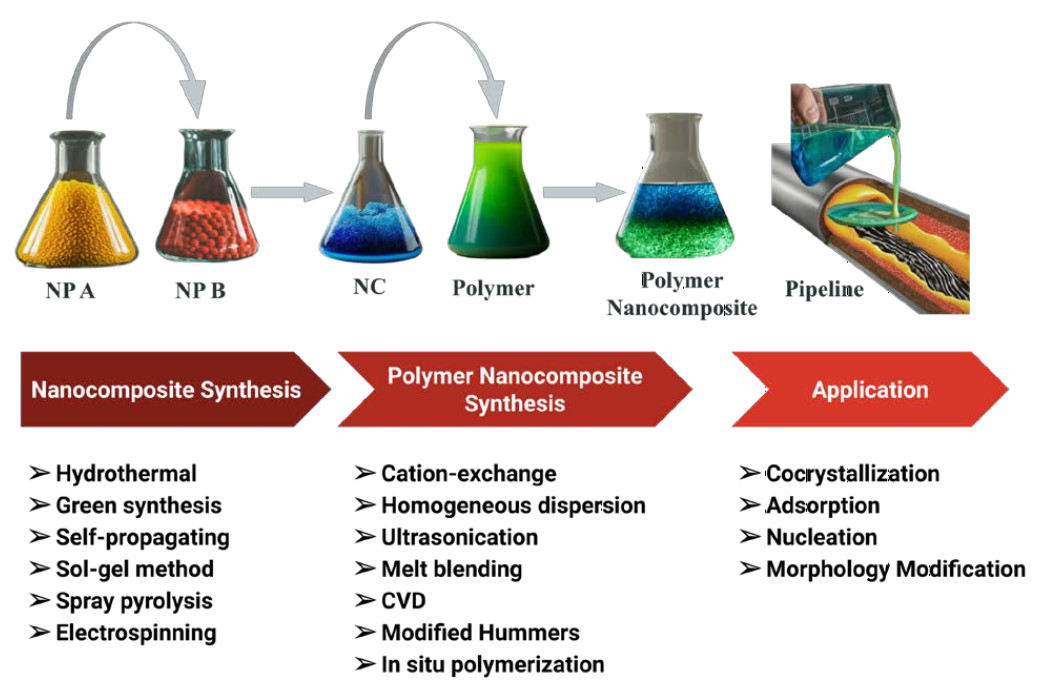









 DownLoad:
DownLoad:
